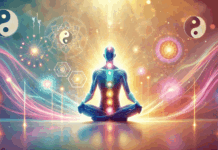Who is Caroline Myss
Caroline Myss is a profound figure in the realms of spirituality, energy medicine, and holistic healing. With her extensive knowledge and insightful teachings, she has empowered countless individuals to explore the intricate connections between mind, body, and spirit. Through her books, workshops, and lectures, Myss has become a beacon of wisdom, guiding people on journeys of self-discovery and healing.
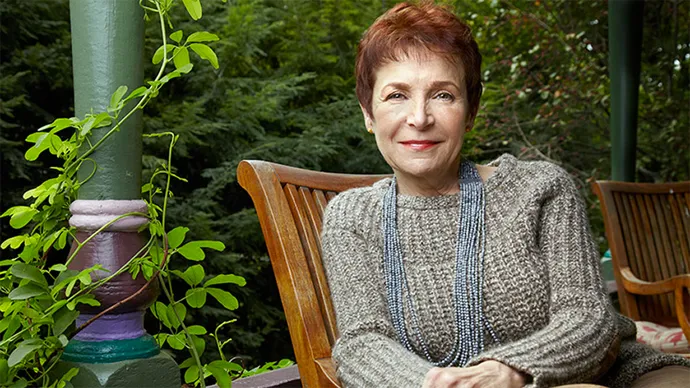
Born on December 2, 1952, Caroline Myss grew up with a deep curiosity about the mysteries of life and the human experience. Her early interests in mysticism, spirituality, and healing set the foundation for her later work as an author and teacher. Myss pursued academic studies in journalism and theology, but it was her intuitive gifts and spiritual insights that truly shaped her path.
One of Myss’s most influential works is “Anatomy of the Spirit,” published in 1996. In this groundbreaking book, she explores the connections between spiritual and physical health, drawing upon the wisdom of ancient traditions such as Kabbalah, Christianity, and Hinduism. Through the lens of the chakra system and the seven sacraments, Myss illuminates the profound links between psychological patterns, emotional wounds, and physical ailments. “Anatomy of the Spirit” revolutionized the way many people perceive illness and wellness, emphasizing the importance of addressing underlying spiritual and emotional imbalances for holistic healing.
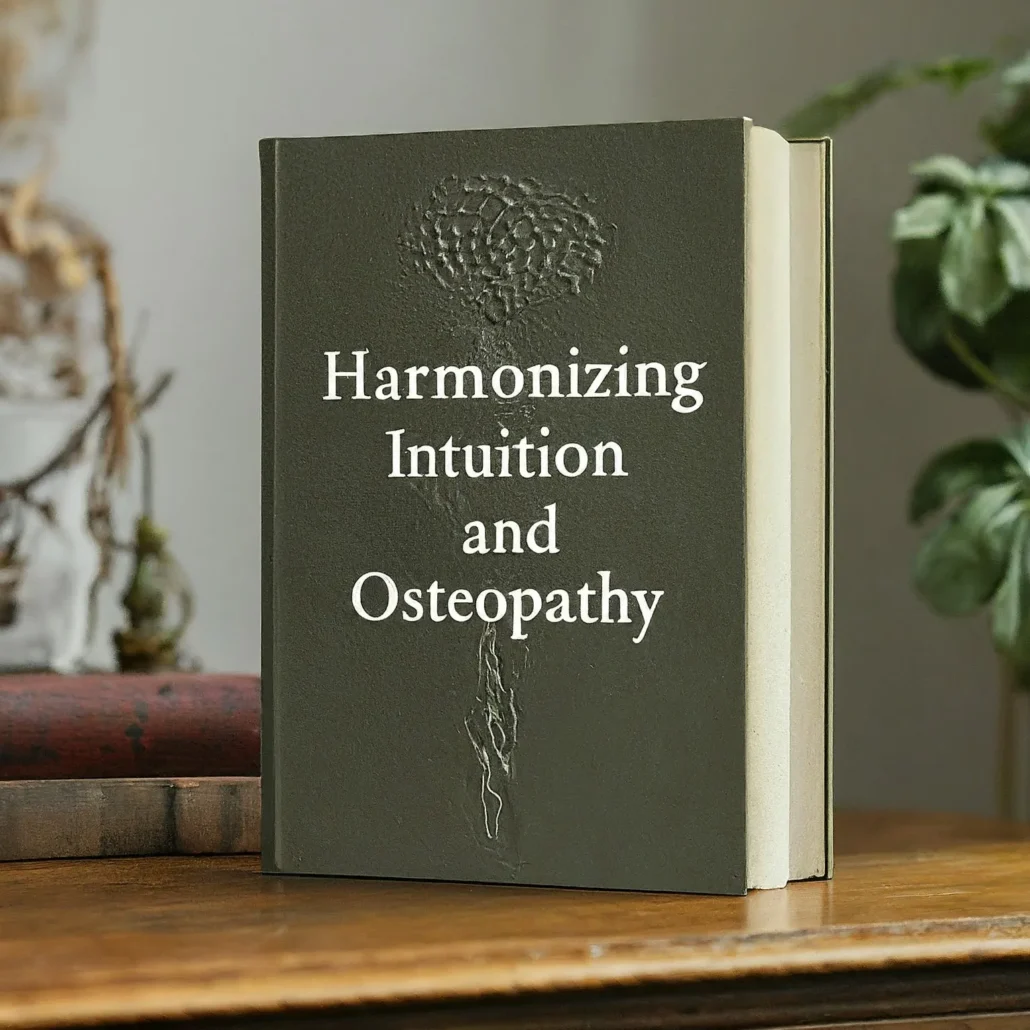
In subsequent books like “Sacred Contracts” and “Entering the Castle,” Myss delves deeper into the exploration of the soul’s journey and the pursuit of divine purpose. “Sacred Contracts” introduces the concept of archetypes and how they shape our lives, relationships, and destinies. Myss encourages readers to identify their personal archetypes and align with their soul’s mission, thereby leading more authentic and fulfilling lives. “Entering the Castle” takes readers on a transformative journey inspired by the mystical teachings of Saint Teresa of Ávila, guiding them through inner chambers of spiritual growth and self-awareness.
Beyond her written works, Caroline Myss is renowned for her engaging workshops, seminars, and lectures. Through her dynamic presentations and profound insights, she has inspired audiences around the world to embrace their innate gifts and tap into the power of intuition and energy medicine. Myss’s teachings blend ancient wisdom with modern science, offering practical tools for personal transformation and healing.
Central to Myss’s teachings is the concept of medical intuition, which she defines as the ability to access intuitive insights about a person’s physical, emotional, and spiritual health. Through her work as a medical intuitive, Myss has witnessed the profound connections between energy, consciousness, and well-being. She emphasizes the importance of cultivating intuition and listening to the body’s wisdom as keys to unlocking healing and wholeness.
In addition to her contributions as an author and teacher, Caroline Myss is a respected voice in the fields of spirituality and consciousness. She has appeared on numerous television and radio programs, sharing her wisdom and insights with a wide audience. Myss continues to inspire and empower individuals on their spiritual journeys, reminding them of their inherent power to heal, transform, and create positive change in their lives and the world.
In essence, Caroline Myss’s work serves as a bridge between ancient wisdom and modern understanding, offering a holistic approach to healing and personal growth. Through her books, teachings, and presence, she invites individuals to embark on profound journeys of self-discovery, empowerment, and transformation. Caroline Myss’s legacy is not only in the words she writes or speaks but in the lives she touches and the hearts she inspires to awaken to their true potential.
Introduction to Intuitive Healing
Intuitive healing is a profound approach to wellness that embraces the interconnectedness of mind, body, and spirit. It operates on the premise that each individual possesses an innate ability to heal themselves, and this healing process can be facilitated by tapping into intuitive insights. In the realm of osteopathy, intuitive healing holds particular relevance, as it complements traditional techniques with a more intuitive and holistic approach.
At its core, osteopathy aims to restore balance and harmony within the body by addressing musculoskeletal issues, promoting circulation, and supporting the body’s self-healing mechanisms. While conventional osteopathic treatments often focus on physical adjustments and manipulations, intuitive healing expands this approach by incorporating the intuitive wisdom of both the practitioner and the patient.
One of the key principles of intuitive healing is the recognition that the body communicates its needs through subtle cues and sensations. Osteopaths who practice intuitive healing learn to listen to these cues, trusting their intuition to guide them in identifying underlying imbalances and formulating tailored treatment plans. This intuitive approach enables practitioners to go beyond surface-level symptoms, delving deeper into the root causes of a patient’s discomfort.
Moreover, intuitive healing acknowledges the interconnectedness of physical, emotional, and energetic aspects of health. It understands that imbalances in one area of life can manifest as physical symptoms in the body. Therefore, intuitive osteopaths approach each patient with a holistic perspective, considering not only their physical ailments but also their emotional state, lifestyle factors, and energetic imbalances.
In the context of the patient-practitioner relationship, intuitive healing fosters a sense of collaboration and partnership. Rather than adopting a paternalistic approach to healthcare, where the practitioner dictates the course of treatment, intuitive osteopaths engage with patients as active participants in their healing journey. This collaborative approach empowers patients to take ownership of their health and well-being, fostering a sense of agency and self-empowerment.
Central to the practice of intuitive healing in osteopathy is the cultivation of empathy, compassion, and intuition. Osteopaths who embrace intuitive healing develop a keen sensitivity to the needs of their patients, tuning into subtle energetic shifts and non-verbal communication cues. This heightened awareness allows them to create a safe and supportive space for healing, where patients feel seen, heard, and valued.
Furthermore, intuitive healing encourages osteopaths to trust their intuition and embrace uncertainty in the healing process. Rather than relying solely on established protocols or techniques, intuitive osteopaths are willing to explore new approaches and adapt their treatments based on the unique needs of each patient. This flexibility and openness to intuitive guidance enable practitioners to tailor their interventions in real-time, optimizing the effectiveness of their treatments.
Exploring the Mind-Body Connection
Exploring the intricate relationship between mind and body lies at the heart of intuitive healing, particularly within the context of osteopathic practice. Intuitive healing serves as a bridge that connects these two aspects of human existence, recognizing their profound interdependence and leveraging this connection to facilitate healing and well-being. Within the realm of osteopathy, this holistic understanding of the mind-body connection is paramount, as it informs not only the treatment approach but also the underlying philosophy of care.
At its essence, intuitive healing acknowledges that mental and emotional states can significantly influence physical health and vice versa. Stress, anxiety, and unresolved emotions can manifest as physical symptoms, while physical discomfort can exacerbate psychological distress. By addressing these interconnected aspects of health, intuitive osteopaths seek to promote holistic healing and restore balance within the body.
Central to the practice of intuitive healing is the concept of somatization, which posits that emotional and psychological issues can manifest as physical symptoms. Osteopaths who embrace intuitive healing approach each patient with a keen awareness of this mind-body connection, recognizing that physical ailments may be rooted in deeper emotional or energetic imbalances. By delving beneath the surface of presenting symptoms, intuitive osteopaths can uncover the underlying causes of a patient’s discomfort and provide targeted interventions that address both the physical and emotional dimensions of their condition.
Moreover, intuitive healing encourages osteopaths to adopt a more holistic view of health, one that encompasses not only the absence of physical illness but also the presence of emotional well-being and spiritual vitality. Rather than treating symptoms in isolation, intuitive osteopaths strive to support the overall health and vitality of their patients, recognizing that true healing occurs when the mind, body, and spirit are in harmony.
In the context of the patient-practitioner relationship, intuitive healing fosters open communication, trust, and empathy, creating a supportive environment where patients feel safe to explore and address the underlying causes of their health issues. By engaging with patients as whole individuals, intuitive osteopaths can better understand the interconnected nature of their physical and emotional experiences, facilitating deeper insights and more effective treatment outcomes.
Furthermore, intuitive healing encourages patients to become active participants in their healing journey, empowering them to take ownership of their health and well-being. Through practices such as mindfulness, meditation, and self-reflection, patients can cultivate greater awareness of the mind-body connection and develop skills to support their own healing process. By incorporating these holistic approaches into their daily lives, patients can enhance the effectiveness of osteopathic treatments and promote long-term wellness.
Understanding Energy Anatomy
Understanding energy anatomy, as proposed by Caroline Myss, offers a fascinating lens through which to explore the subtle energetic dynamics that underlie physical health and well-being. Myss’s work emphasizes the intricate interplay between the physical body and its energetic counterpart, recognizing that disruptions in the flow of energy can manifest as physical symptoms and contribute to disease. Within the context of osteopathic treatment, the principles of energy anatomy provide valuable insights into the underlying causes of musculoskeletal issues and inform holistic approaches to healing.
Central to Myss’s concept of energy anatomy is the notion of the human energy field, or aura, which she describes as a dynamic matrix of energy that surrounds and penetrates the physical body. This energetic field is composed of various layers, each corresponding to different aspects of the self, including the physical, emotional, mental, and spiritual dimensions. According to Myss, disturbances or blockages in the energy field can disrupt the flow of vital life force energy, leading to imbalances and ultimately manifesting as physical symptoms.
In the context of osteopathic treatment, understanding energy anatomy can enrich the diagnostic process by providing additional insights into the root causes of a patient’s condition. Osteopaths who incorporate principles of energy anatomy into their practice may use techniques such as palpation and intuitive assessment to detect subtle energetic imbalances within the body. By tuning into the energy field surrounding the physical body, practitioners can gain a deeper understanding of the underlying energetic patterns that may be contributing to musculoskeletal issues.
Moreover, the principles of energy anatomy can inform the development of tailored treatment plans that address not only the physical symptoms but also the underlying energetic imbalances. Osteopaths may integrate techniques such as energy healing, breathwork, and visualization into their practice to help restore harmony to the energy field and support the body’s natural healing process. By addressing imbalances at the energetic level, practitioners can facilitate more profound and lasting shifts in health and well-being.
Furthermore, understanding energy anatomy can enhance the therapeutic relationship between practitioner and patient by fostering a deeper sense of connection and mutual trust. Osteopaths who acknowledge the energetic dimensions of health are better equipped to provide holistic, patient-centered care that honors the interconnectedness of mind, body, and spirit. By working collaboratively with patients to address both the physical and energetic aspects of their condition, practitioners can empower individuals to take an active role in their own healing journey.
One of the key principles proposed by Myss is the concept of the human energy system, which encompasses various layers and centers of energy that influence our physical, emotional, mental, and spiritual well-being.
In Myss’s framework, the human energy system includes:
- Chakras: Myss describes chakras as centers of spiritual power within the body that correspond to specific aspects of human experience and consciousness. Each chakra is associated with a particular color, symbol, and set of attributes, and disturbances in these energy centers can manifest as physical or psychological symptoms.
- Archetypes: Myss identifies archetypes as universal patterns of energy that shape our personalities, behaviors, and life experiences. These archetypes are believed to influence the way we interact with the world and the roles we play in our relationships, careers, and personal development.
- Sacred Contracts: Myss introduces the concept of sacred contracts, which are soul-level agreements we make before birth to fulfill certain purposes and lessons in our lives. These contracts are thought to guide our experiences and relationships and can be understood through the lens of archetypal energies and the chakra system.
- Energy Anatomy: Myss emphasizes the interconnectedness of mind, body, and spirit and the role of energy anatomy in maintaining health and vitality. She teaches that disruptions in the flow of energy can lead to illness and imbalance, and healing involves restoring harmony to the energy system through various holistic practices.
In osteopathic treatment, the principles of energy anatomy as proposed by Caroline Myss can complement traditional osteopathic approaches by providing a deeper understanding of the energetic aspects of health and disease. Osteopaths can incorporate these principles into their practice in several ways:
- Assessment: Osteopaths can assess the energetic state of their patients by observing subtle cues such as body language, energy levels, and emotional tone. By tuning into the patient’s energy field, osteopaths can gain insights into underlying imbalances and tailor their treatment approach accordingly.
- Treatment: Osteopathic treatment can include techniques that address not only physical structures but also energetic patterns and blockages. Osteopaths may use gentle manipulation, energy work, and other holistic modalities to restore balance to the body’s energy system and promote healing on all levels.
- Integration: By integrating principles of energy anatomy into their practice, osteopaths can offer a more holistic and comprehensive approach to healthcare. This may involve collaborating with other holistic practitioners, educating patients about the mind-body connection, and empowering them to take an active role in their healing journey.
Overall, incorporating the principles of energy anatomy as proposed by Caroline Myss into osteopathic treatment can enhance the effectiveness of care by addressing the underlying energetic imbalances contributing to illness and promoting holistic healing on all levels of being.
Cases Studies in Intuitive Healing
Certainly! Here are a couple of case studies illustrating how intuitive healing techniques complemented osteopathic treatment for improved patient outcomes:
Case Study 1: Lower Back Pain
Patient Background:
A 45-year-old office worker presented with chronic lower back pain that had not responded to conventional treatments, including medication and physical therapy. The patient reported feeling stressed and overwhelmed due to work pressures and personal responsibilities.
Osteopathic Assessment and Treatment:
During the initial assessment, the osteopath noted areas of tension and restricted mobility in the lumbar spine and pelvis. Using a combination of manual techniques, including soft tissue manipulation and gentle joint mobilization, the osteopath aimed to restore alignment and alleviate pain. However, despite initial improvements in mobility, the patient’s pain persisted.
Intuitive Healing Approach:
Recognizing the influence of stress and emotional factors on the patient’s condition, the osteopath integrated intuitive healing techniques into the treatment plan. During subsequent sessions, the osteopath focused on creating a supportive and nurturing environment for the patient, encouraging open communication and emotional expression. Through guided visualization and breathwork exercises, the patient learned to release tension and reduce stress levels, facilitating a deeper sense of relaxation and well-being.
Outcome:
Over the course of several sessions, the patient reported significant improvements in both physical and emotional symptoms. Not only did the intensity of the lower back pain decrease, but the patient also experienced a greater sense of overall vitality and resilience. By addressing the underlying emotional factors contributing to the patient’s condition, intuitive healing techniques complemented osteopathic treatment, leading to a more holistic and sustainable outcome.
Case Study 2: Migraine Headaches
Patient Background:
A 35-year-old woman presented with debilitating migraine headaches that had been occurring regularly for several years. Despite trying various medications and lifestyle modifications, the frequency and severity of her migraines had not improved. The patient reported feeling frustrated and overwhelmed by her inability to find relief.
Osteopathic Assessment and Treatment:
Upon examination, the osteopath identified areas of tension and restriction in the cervical spine and cranial bones, which were likely contributing to the patient’s migraines. Using gentle cranial osteopathic techniques, the osteopath aimed to release restrictions and restore mobility in the affected areas. While the patient experienced temporary relief following treatment, the migraines persisted.
Intuitive Healing Approach:
Recognizing the complex interplay between physical, emotional, and energetic factors in migraine pathology, the osteopath incorporated intuitive healing techniques into the treatment plan. Through guided meditation and energy healing practices, the patient learned to identify and release energetic blockages that may be contributing to her migraines. Additionally, the osteopath provided guidance on stress management and relaxation techniques to help the patient cope with triggers and reduce the frequency of migraines.
Outcome:
Over time, the patient reported a significant reduction in the frequency and severity of her migraines. By addressing both the physical and energetic aspects of her condition, intuitive healing techniques complemented osteopathic treatment, leading to improved symptom management and overall quality of life. The patient expressed gratitude for the holistic approach to care, which empowered her to take an active role in her healing journey and achieve lasting relief from her migraines.
These case studies illustrate how intuitive healing techniques can complement osteopathic treatment by addressing the underlying emotional and energetic factors contributing to patients’ symptoms. By integrating intuitive insights with traditional osteopathic techniques, practitioners can offer more holistic and personalized care, leading to improved patient outcomes and enhanced well-being.
Incorporating Intuition into Osteopathic Practice
Incorporating intuition into osteopathic practice is a transformative approach that can greatly enhance patient care and treatment outcomes. While the foundation of osteopathy lies in scientific principles and evidence-based techniques, the integration of intuitive insights adds a layer of depth and understanding to the healing process. Developing and trusting one’s intuitive abilities as an osteopath is a journey that requires dedication, practice, and an openness to new perspectives.
A fundamental technique for fostering intuition within osteopathic practice is mindfulness meditation. Mindfulness cultivates present-moment awareness and a deep connection to inner wisdom. By practicing mindfulness regularly, osteopaths can sharpen their ability to tune into subtle cues and sensations, both within themselves and their patients. Through mindfulness, practitioners can quiet the chatter of the mind, allowing intuitive insights to surface more readily during patient interactions and treatments.
Another effective strategy for developing intuition is to maintain a journal to record intuitive impressions and reflections. Keeping a journal allows osteopaths to track patterns, identify recurring themes, and deepen their understanding of their own intuitive process over time. By documenting intuitive experiences and reflecting on their significance, practitioners can gain greater clarity and confidence in their intuitive abilities.
Building a strong rapport with patients is essential for creating a supportive environment where intuition can thrive. Establishing trust and rapport requires active listening, empathy, and genuine compassion. Osteopaths who demonstrate genuine care and concern for their patients foster an atmosphere of openness and collaboration, which encourages the sharing of valuable insights and intuitive impressions.
Approaching each patient encounter with curiosity and an open mind is essential for harnessing intuition in osteopathic practice. Rather than adhering rigidly to established protocols or techniques, practitioners can remain flexible and adaptive, allowing intuition to guide the treatment process. By tuning into the unique needs and energy of each individual, osteopaths can tailor treatments more effectively and address the underlying causes of a patient’s condition.
Visualization and imagery techniques can also be powerful tools for accessing intuitive insights in osteopathic practice. By visualizing the patient’s energy field or imagining the flow of vitality within the body, practitioners can gain deeper insights into the root causes of a patient’s symptoms. Visualization techniques can be used during treatments to guide manual interventions and facilitate healing on a deeper level.
Trusting intuition requires letting go of self-doubt and cultivating a sense of inner knowing and confidence. Osteopaths must have faith in their intuitive abilities and trust that the insights they receive are valuable contributions to the healing process. By embracing intuition as a integral aspect of osteopathic practice, practitioners can expand their capacity to provide holistic, patient-centered care that addresses the physical, emotional, and energetic dimensions of health and well-being.
Here are some tips and techniques to help osteopaths develop and trust their intuitive abilities:
- Mindfulness and Presence: Cultivate mindfulness and present-moment awareness during patient interactions. This can help quiet the mind and allow intuition to surface more readily.
- Deep Listening: Practice deep listening, not just to what patients say, but also to their body language, tone of voice, and energy. Pay attention to subtle shifts and cues.
- Body Awareness: Develop a heightened awareness of your own body sensations and inner guidance. This can serve as a compass for understanding what’s happening in the patient’s body.
- Reflection and Self-Inquiry: Set aside time for reflection and self-inquiry to explore and understand your own intuitive processes. What sensations or feelings typically accompany moments of insight or intuition?
- Trust Your Gut: Trust your gut instincts and initial impressions, even if they don’t immediately align with objective findings. Intuition often leads to valuable insights that may not be immediately evident.
- Validate Intuitive Impressions: When appropriate, validate your intuitive impressions with the patient. This can foster trust and collaboration in the therapeutic relationship.
- Continuing Education: Attend workshops, seminars, and courses focused on intuition and mind-body connections. Learning from experts in the field can help deepen your understanding and confidence in intuitive abilities.
- Peer Support and Supervision: Seek out peer support and supervision to discuss cases and experiences where intuition played a role. Hearing others’ perspectives can provide validation and help refine your intuitive skills.
- Practice Discernment: While intuition is valuable, it’s essential to balance it with clinical reasoning and evidence-based practice. Learn to discern when intuition is guiding you towards valuable insights versus when further investigation or confirmation is needed.
- Maintain Boundaries: Finally, maintain professional boundaries and ethical standards when incorporating intuition into practice. Respect patient autonomy and always prioritize their well-being.
- Cultivate Self-Awareness: Understand your own thought processes, biases, and emotional reactions. Self-awareness lays the foundation for recognizing and trusting your intuitive insights.
- Practice Meditation and Mindfulness: Regular meditation and mindfulness practices can help quiet the mind and create space for intuitive insights to emerge.
- Follow Curiosity: Pay attention to what piques your interest or curiosity during interactions or decision-making processes. These can be subtle cues from your intuition guiding you towards important insights.
- Learn From Experience: Reflect on past experiences where intuition played a role in decision-making. What were the outcomes? Analyze how your intuition influenced your actions and decisions.
- Engage in Creative Activities: Activities such as art, music, or journaling can help tap into subconscious insights and stimulate intuitive thinking.
- Trust Your Instincts: Learn to trust your instincts and initial impressions, even if they can’t be immediately rationalized. Intuition often draws upon subconscious knowledge and patterns that the rational mind may overlook.
- Seek Feedback: Discuss your intuitive impressions with trusted colleagues or mentors. Their feedback can help validate and refine your intuitive insights.
- Practice Detached Observation: Cultivate the ability to observe situations or interactions without immediately reacting or analyzing. This allows intuitive insights to surface more naturally.
- Stay Open-Minded: Remain open to unconventional or unexpected solutions that arise from intuitive insights. Sometimes the best decisions defy logic and arise from a deeper understanding.
- Continuously Learn and Grow: Intuition, like any skill, improves with practice and experience. Continuously seek opportunities for learning and growth to refine your intuitive abilities.
The Role of Intuition in Diagnosis and Treatment
Intuition plays a significant role in both the diagnosis and treatment phases of healthcare, offering valuable insights that complement traditional medical approaches. In diagnosis, intuition allows healthcare practitioners to tap into a deeper understanding of a patient’s condition beyond what may be immediately evident through clinical tests or examinations. It involves a subtle perception of patterns, cues, and non-verbal cues that can provide crucial clues about the underlying causes of symptoms. Intuitive diagnosis often involves a holistic assessment of the patient’s physical, emotional, and energetic state, taking into account factors such as lifestyle, stress levels, and emotional well-being. By combining intuitive insights with clinical data, practitioners can arrive at a more comprehensive understanding of the patient’s condition, leading to more accurate diagnoses and tailored treatment plans.
Similarly, intuition plays a vital role in the treatment phase by guiding practitioners in selecting the most appropriate interventions for each individual patient. While evidence-based medicine provides valuable guidelines and protocols, intuitive insights can help practitioners personalize treatments based on the unique needs and preferences of the patient. Intuitive treatment involves tuning into the patient’s energy field and subtle body cues to determine the most effective approach for promoting healing and well-being. This may involve selecting specific techniques or modalities that resonate with the patient’s energy, as well as adjusting treatment plans in real-time based on intuitive feedback during the session.
Furthermore, intuition enhances the therapeutic relationship between practitioner and patient, fostering trust, empathy, and collaboration. When patients feel seen, heard, and understood on a deeper level, they are more likely to engage actively in their healing process and experience better treatment outcomes. By honoring intuitive insights and incorporating them into clinical practice, healthcare practitioners can provide more personalized, patient-centered care that addresses the physical, emotional, and energetic aspects of health and well-being. Ultimately, the integration of intuition into diagnosis and treatment offers a holistic approach to healthcare that honors the complexity of the human experience and promotes optimal healing and wellness.
Here’s how intuitive insights can enhance diagnostic accuracy and guide treatment plans in osteopathy:
- Subtle Body Cues: Intuition often picks up on subtle cues from the patient’s body, such as tension patterns, postural asymmetries, and areas of tenderness. These cues may not always be evident through traditional assessment methods but can provide valuable information about underlying imbalances and dysfunctions.
- Holistic Understanding: Intuition allows osteopaths to perceive patients holistically, considering not just physical symptoms but also emotional, mental, and energetic aspects of health. This broader perspective can uncover deeper root causes of dysfunction and guide more comprehensive treatment approaches.
- Pattern Recognition: Intuition relies on pattern recognition, drawing upon the osteopath’s experience and knowledge to recognize familiar patterns of dysfunction. This intuitive sense of pattern recognition can expedite diagnosis and streamline treatment planning.
- Unconscious Processing: Intuition often taps into the osteopath’s unconscious processing of information gathered during the assessment and history-taking process. While the conscious mind may focus on specific details, the unconscious mind synthesizes this information and generates intuitive insights that contribute to a more nuanced understanding of the patient’s condition.
- Instinctual Response: Intuitive insights often prompt instinctual responses in osteopaths, guiding them towards the most appropriate treatment approach. These instinctual responses may involve subtle adjustments to techniques, changes in treatment intensity, or exploration of additional areas of the body based on intuitive hunches.
- Patient Feedback: Intuition can also be informed by patient feedback, including verbal cues, nonverbal communication, and intuitive resonance between practitioner and patient. Osteopaths who trust their intuition are more likely to pick up on these subtle cues and adjust their approach accordingly.
- Enhanced Therapeutic Relationship: Trusting and acting upon intuitive insights can enhance the therapeutic relationship between osteopath and patient. When patients feel understood and supported on a deeper level, they are more likely to engage actively in their treatment and experience improved outcomes.
- Creative Problem-Solving: Intuition fosters creative problem-solving in osteopathy, encouraging practitioners to think outside the box and explore innovative treatment approaches. By embracing intuitive insights, osteopaths can tailor treatment plans to meet the unique needs of each patient more effectively.
- Subconscious Clues: Intuition helps osteopaths notice subconscious clues that patients may exhibit unconsciously, such as minor shifts in breathing patterns or subtle facial expressions, which can indicate pain or discomfort in specific areas.
- Enhanced Sensory Perception: Osteopaths often develop heightened sensory perception through practice. Intuition can amplify this sensitivity, allowing practitioners to detect subtle changes in tissue texture, temperature, and mobility that may indicate underlying issues.
- Energetic Imbalances: Intuition allows osteopaths to sense energetic imbalances within the body. This can guide them in addressing disruptions in the body’s energy flow, contributing to a more comprehensive treatment approach.
- Temporal Insights: Intuition can provide insights into the timing and progression of a patient’s condition, helping osteopaths understand how long an issue has been developing and predicting its future course.
- Synchronicity and Timing: Intuitive osteopaths may experience moments of synchronicity, where they instinctively know the right moment to apply a specific technique or intervention, maximizing its effectiveness.
- Connection to Patient’s Story: Intuition helps osteopaths connect deeply with the patient’s narrative, understanding the context of their symptoms within their life story. This can lead to more empathetic and tailored care.
- Internal Visualizations: Some osteopaths use intuitive visualizations to ‘see’ inside the body, imagining the alignment and condition of structures. This mental imagery can assist in diagnosing and treating complex issues.
- Nonlinear Thinking: Intuition supports nonlinear thinking, enabling osteopaths to make connections between seemingly unrelated symptoms or conditions, leading to more comprehensive and integrative treatment plans.
- Adaptive Techniques: Intuitive insights guide osteopaths in adapting their techniques on the fly, responding to the patient’s immediate needs and reactions during treatment, enhancing the efficacy of the intervention.
- Interdisciplinary Insights: Intuition can help osteopaths recognize when a patient may benefit from interdisciplinary care, such as referrals to other healthcare providers, ensuring the patient receives the most holistic and effective treatment.
- Recognition of Subtle Patterns: Intuition helps osteopaths identify subtle patterns in patient presentations that may not be immediately obvious. This can include recognizing patterns of compensation or adaptation that the body has developed over time.
- Sensitivity to Vibrational Changes: Some osteopaths develop a sensitivity to vibrational changes within the body. Intuition can enhance this ability, helping practitioners detect disturbances in the body’s natural rhythm and flow.
- Emotional Resonance: Intuition can guide osteopaths to understand and empathize with the emotional states of their patients, which can be crucial for addressing psychosomatic issues and providing holistic care.
- Body Language Interpretation: Intuitive insights help osteopaths read and interpret body language more accurately, understanding the non-verbal cues that indicate discomfort, pain, or emotional distress.
- Sympathetic Resonance: Osteopaths may use intuition to achieve sympathetic resonance with their patients, synchronizing their treatment approach with the patient’s unique physiological and energetic state.
- Integration of Past Experiences: Intuition allows osteopaths to draw on their past clinical experiences in a fluid and dynamic way, applying lessons learned from previous cases to current patient situations.
- Anticipating Reactions: Intuitive osteopaths can often anticipate how a patient’s body will respond to certain manipulations or treatments, allowing them to adjust their techniques in real-time for optimal effectiveness.
- Tailoring Communication: Intuition helps osteopaths tailor their communication style to match the needs and preferences of each patient, enhancing the therapeutic relationship and improving patient compliance.
- Spatial Awareness: Intuitive insights can enhance an osteopath’s spatial awareness, helping them to more accurately assess and treat structural and functional imbalances within the body.
- Inner Knowing: Sometimes, osteopaths experience an inner knowing or gut feeling about the right course of action to take, even when it defies conventional logic. This can lead to innovative and highly effective treatment strategies.
Addressing Emotional Blockages
Addressing emotional blockages is a crucial aspect of holistic healing, as unresolved emotions can manifest as physical ailments and contribute to overall dis-ease in the body. Intuitive healing approaches offer valuable tools and techniques for identifying and addressing these emotional blockages, helping individuals achieve greater balance and well-being. One of the key principles of intuitive healing is the recognition that the mind, body, and spirit are interconnected, and that emotional imbalances can have a profound impact on physical health. By tuning into subtle energetic cues and intuitive insights, practitioners can uncover the underlying emotional root causes of a patient’s symptoms. This may involve exploring past traumas, unresolved conflicts, or deeply ingrained beliefs and patterns that are contributing to the manifestation of physical ailments. Through techniques such as guided visualization, energy healing, and somatic experiencing, individuals can begin to release these emotional blockages and create space for healing to occur.
Intuitive healing approaches also emphasize the importance of creating a safe and supportive environment for emotional expression and healing. Practitioners provide compassionate listening and nonjudgmental support as patients explore and process their emotions. This can involve acknowledging and validating the patient’s experiences, as well as providing guidance and tools for navigating challenging emotions. By fostering a sense of trust and openness, intuitive healers create a space where patients feel empowered to delve into their emotional landscapes and begin the process of healing and transformation.
Moreover, intuitive healing approaches often incorporate techniques for reprogramming limiting beliefs and releasing negative thought patterns that contribute to emotional blockages. Through practices such as affirmations, visualization, and mindfulness, individuals can cultivate a more positive and empowering mindset, allowing for greater emotional freedom and resilience. By reframing negative thought patterns and beliefs, patients can shift their perception of themselves and their experiences, leading to profound shifts in emotional well-being and overall health.
In addition to addressing emotional blockages on an individual level, intuitive healing approaches also recognize the importance of addressing systemic and societal factors that contribute to emotional distress. This may involve exploring issues such as cultural norms, societal expectations, and systemic injustices that impact individuals’ emotional well-being. By raising awareness of these larger societal forces and working towards systemic change, intuitive healers can create a more supportive and equitable environment for emotional healing to occur.
Overall, intuitive healing approaches offer a holistic and comprehensive approach to addressing emotional blockages and promoting overall well-being. By recognizing the interconnectedness of mind, body, and spirit, practitioners can uncover the underlying emotional root causes of physical ailments and support individuals in their journey towards healing and transformation. Through compassionate listening, supportive guidance, and empowering techniques, intuitive healers create a safe and nurturing space for individuals to explore and release emotional blockages, leading to greater vitality, resilience, and inner peace.
Intuitive healing approaches can indeed play a crucial role in identifying and addressing emotional blockages that contribute to physical ailments. Here’s how these approaches can help:
- Body-Mind Connection: Intuitive healing recognizes the interconnectedness of the mind, body, and spirit. It acknowledges that emotional experiences and unresolved traumas can manifest as physical symptoms or blockages in the body. By tuning into intuitive insights, healers can uncover the emotional roots of physical ailments.
- Subtle Energy Awareness: Intuitive healers often work with subtle energy systems, such as the chakras or meridians, which are believed to be interconnected with emotions and mental states. Through intuitive perception, healers can identify imbalances or blockages in these energy systems that may be linked to unresolved emotions.
- Empathetic Understanding: Intuitive healers cultivate empathetic understanding and deep listening skills, allowing them to attune to the emotional experiences of their clients. By creating a safe and supportive space, healers can encourage clients to explore and release suppressed emotions that may be contributing to their physical symptoms.
- Symbolic Interpretation: Intuitive healing often involves symbolic interpretation of physical symptoms and sensations. Healers may intuitively interpret the meaning behind certain symptoms or body sensations, recognizing them as expressions of underlying emotional states or unresolved issues.
- Past Trauma Exploration: Intuitive healing approaches may involve exploring past traumas or life experiences that are contributing to present-day emotional blockages. Through intuitive guidance, healers can facilitate the healing of past wounds, allowing clients to release pent-up emotions and achieve greater emotional freedom.
- Energy Clearing and Balancing: Intuitive healers may use various techniques, such as energy clearing, balancing, or Reiki, to release stagnant energy and restore energetic harmony within the body-mind system. These practices can help dissipate emotional blockages and promote overall well-being.
- Intuitive Counseling and Coaching: Intuitive healers often offer counseling or coaching sessions to support clients in exploring their emotional landscapes and identifying strategies for releasing blockages. By combining intuitive insights with practical guidance, healers can empower clients to take proactive steps towards emotional healing.
- Integration and Transformation: Intuitive healing approaches focus on integrating and transforming emotional blockages at a deep level, rather than simply alleviating surface symptoms. Through intuitive guidance and healing practices, clients can experience profound shifts in their emotional well-being, leading to greater physical health and vitality.
- Psychotherapy: Intuitive healing techniques can complement traditional psychotherapy by helping clients access deeper layers of their subconscious mind. Therapists trained in intuitive approaches may use guided imagery, visualization, or somatic experiencing to help clients uncover and process underlying emotional blockages.
- Life Coaching: Intuitive life coaches may utilize intuitive insights to help clients identify and overcome obstacles that are preventing them from reaching their goals. By tapping into their intuition, coaches can offer personalized guidance and support to help clients navigate emotional challenges and make positive changes in their lives.
- Energy Psychology: Energy psychology modalities such as Emotional Freedom Techniques (EFT) or Thought Field Therapy (TFT) incorporate intuitive approaches to address emotional blockages and promote healing. Practitioners guide clients in tapping specific acupressure points while focusing on the emotional issues they wish to address, facilitating the release of emotional energy blockages.
- Mindfulness and Meditation: Intuitive awareness can be cultivated through mindfulness and meditation practices, allowing individuals to observe their thoughts, emotions, and bodily sensations without judgment. By developing this heightened awareness, individuals can become more attuned to the emotional roots of physical symptoms and learn to release emotional blockages through self-reflection and acceptance.
- Creative Arts Therapy: Creative arts therapies such as art therapy, music therapy, and dance/movement therapy provide expressive outlets for exploring and processing emotions. Intuitive approaches within these modalities encourage clients to trust their creative instincts and allow emotions to flow freely, facilitating the release of emotional blockages stored in the body.
- Spiritual Healing: Intuitive healing techniques rooted in spirituality and mysticism can help individuals connect with their inner wisdom and higher guidance. Practices such as prayer, meditation, and energy healing rituals can facilitate the release of emotional blockages by inviting divine intervention and support.
- Integrative Medicine: Integrative medicine approaches combine conventional medical treatments with complementary and alternative therapies, including intuitive healing modalities. Integrative practitioners may use intuitive insights to guide treatment plans and address the emotional aspects of physical illness, promoting holistic healing and well-being.
- Self-Help and Personal Development: Individuals interested in personal growth and self-help may benefit from incorporating intuitive practices into their daily routines. Techniques such as journaling, intuitive writing, and intuition development exercises can help individuals tap into their inner wisdom and identify and release emotional blockages that may be holding them back.
Ethical Considerations in Intuitive Healing
Integrating intuitive practices into osteopathic care raises important ethical considerations that practitioners must navigate to ensure the well-being and autonomy of their patients while maintaining professional standards and boundaries. One key ethical consideration is the obligation of practitioners to uphold the principles of beneficence and nonmaleficence, which require them to act in the best interests of their patients and avoid causing harm. While intuitive insights can offer valuable guidance in diagnosis and treatment, practitioners must critically evaluate the reliability and validity of intuitive information and avoid making decisions based solely on intuition without supporting evidence or clinical reasoning. Additionally, practitioners must recognize the potential for bias and personal interpretation in intuitive perceptions and take steps to minimize these influences to ensure the integrity of their practice.
Another ethical consideration is the importance of informed consent and shared decision-making in the therapeutic relationship. Patients have the right to be fully informed about the nature of the treatments they receive, including any intuitive or energy-based techniques employed by the practitioner, and to actively participate in decisions regarding their care. Practitioners must provide clear explanations of intuitive practices, including their purpose, potential benefits, and possible risks, and obtain consent from patients before incorporating these techniques into their treatment plans. Additionally, practitioners must respect patients’ autonomy and preferences regarding the use of intuitive healing approaches and be prepared to offer alternative options if patients express discomfort or hesitation.
Maintaining professional boundaries is essential when integrating intuitive practices into osteopathic care to ensure the integrity and trustworthiness of the therapeutic relationship. Practitioners must establish clear boundaries around the use of intuitive insights and refrain from engaging in practices that exceed their scope of practice or violate ethical guidelines. This may include avoiding making unsubstantiated claims about the efficacy of intuitive healing techniques, refraining from diagnosing or treating conditions outside of their area of expertise, and respecting patients’ privacy and confidentiality regarding sensitive information obtained through intuitive perceptions.
Furthermore, practitioners must be mindful of the potential for transference and countertransference dynamics to arise in the therapeutic relationship when using intuitive practices. Transference occurs when patients project their feelings and experiences onto the practitioner, while countertransference occurs when practitioners project their own feelings and experiences onto the patient. These dynamics can influence the practitioner’s intuitive perceptions and judgments and may compromise the objectivity and effectiveness of the therapeutic process. Practitioners must engage in regular self-reflection and supervision to identify and address potential transference and countertransference issues and maintain professional objectivity and integrity in their practice.
ntegrating intuitive practices into osteopathic care can offer valuable insights and enhance the therapeutic process, but it’s essential to consider the ethical implications and maintain professional boundaries. Here’s an examination of the ethical considerations:
- Informed Consent: Osteopaths should obtain informed consent from patients before incorporating intuitive practices into their care. Patients should be informed about the nature of intuitive techniques, their potential benefits and limitations, and any associated risks. This ensures that patients have the autonomy to make informed decisions about their treatment.
- Transparency and Honesty: Osteopaths should be transparent and honest about their intuitive abilities and the role they play in patient care. They should avoid making unsubstantiated claims or presenting intuition as a substitute for evidence-based practice. Maintaining transparency helps build trust and credibility with patients.
- Professional Competence: Osteopaths should ensure that they have the necessary training, skills, and experience to integrate intuitive practices into their care responsibly. They should continuously seek education and supervision to enhance their intuitive abilities and ensure they are providing competent and ethical care.
- Respect for Patient Autonomy: Osteopaths must respect patients’ autonomy and preferences regarding the use of intuitive practices. Patients should have the right to decline or opt-out of intuitive techniques if they are uncomfortable or skeptical about them. Osteopaths should always prioritize the patient’s best interests and respect their treatment preferences.
- Avoiding Exploitation: Osteopaths should avoid exploiting patients’ vulnerability or dependency on intuitive practices for financial gain or personal gratification. They should use intuition responsibly and ethically, focusing on the patient’s well-being rather than their own interests.
- Maintaining Professional Boundaries: Osteopaths must maintain clear professional boundaries when incorporating intuitive practices into their care. They should avoid crossing boundaries that could lead to dual relationships, conflicts of interest, or breaches of confidentiality. Osteopaths should also refrain from engaging in practices that could compromise their objectivity or impartiality.
- Ethical Decision-Making: Osteopaths should engage in ethical decision-making processes when using intuitive practices in patient care. They should consider the potential risks and benefits, assess the reliability and validity of intuitive insights, and consult with colleagues or supervisors when appropriate. Ethical decision-making helps ensure that osteopaths act in accordance with professional standards and ethical principles.
- Accountability and Documentation: Osteopaths should maintain accurate and thorough documentation of their use of intuitive practices in patient care. Documentation should include the rationale for incorporating intuitive techniques, the patient’s informed consent, any relevant intuitive insights or observations, and the outcomes of treatment. This helps ensure accountability and facilitates continuity of care.
Intuitive Healing and Self-Care for Osteopaths
Integrating intuitive healing into osteopathic practice can be a transformative journey that enhances the effectiveness of patient care and promotes holistic well-being. However, it is essential for osteopaths who engage in intuitive healing to prioritize self-awareness and self-care practices to ensure their own health and vitality while serving others. The nature of intuitive healing requires practitioners to tune into subtle energetic cues and empathetically engage with patients’ emotional and physical experiences, which can be emotionally and energetically demanding. Therefore, cultivating self-awareness is paramount for osteopaths to recognize and manage their own emotions, boundaries, and energetic boundaries.
One fundamental aspect of self-awareness is mindfulness, which involves paying attention to the present moment with openness, curiosity, and non-judgment. Mindfulness practices, such as meditation, breathwork, and body scanning, can help osteopaths cultivate greater self-awareness and emotional resilience, enabling them to remain grounded and centered amidst the challenges of clinical practice. By regularly engaging in mindfulness practices, osteopaths can develop a deeper understanding of their own inner landscape and better regulate their emotional responses to patient interactions and challenging situations.
Moreover, self-care practices play a crucial role in supporting the physical, emotional, and energetic well-being of osteopaths who engage in intuitive healing. Self-care encompasses a wide range of activities, including exercise, nutrition, rest, social connection, and creative expression, all of which are essential for maintaining balance and vitality in the demanding field of healthcare. Osteopaths must prioritize self-care as a non-negotiable aspect of their professional practice, recognizing that their ability to care for others is directly dependent on their own health and well-being.
Boundaries are another critical aspect of self-care for osteopaths practicing intuitive healing. Setting clear boundaries around time, energy, and emotional availability is essential for preventing burnout and maintaining professional integrity. Osteopaths must learn to recognize their own limits and communicate effectively with patients about what they can and cannot provide in terms of emotional support and energetic exchange. By establishing healthy boundaries, osteopaths can protect their own well-being while still offering compassionate and effective care to their patients.
Additionally, regular self-reflection and supervision are essential for supporting the ongoing growth and development of osteopaths who engage in intuitive healing. Supervision provides a safe and supportive space for practitioners to explore their experiences, gain insight into their practice, and receive guidance and feedback from experienced mentors. Through self-reflection and supervision, osteopaths can deepen their understanding of their own intuitive process, identify areas for growth, and ensure they are practicing ethically and responsibly.
Books by Caroline Myss
“Anatomy of the Spirit: The Seven Stages of Power and Healing” – In this groundbreaking book, Myss explores the connections between spiritual and physical health, drawing upon the wisdom of various traditions to illuminate the interconnectedness of mind, body, and spirit.

“Sacred Contracts: Awakening Your Divine Potential” – Myss introduces the concept of sacred contracts and archetypes, guiding readers on a journey to discover their life’s purpose and fulfill their spiritual destiny.
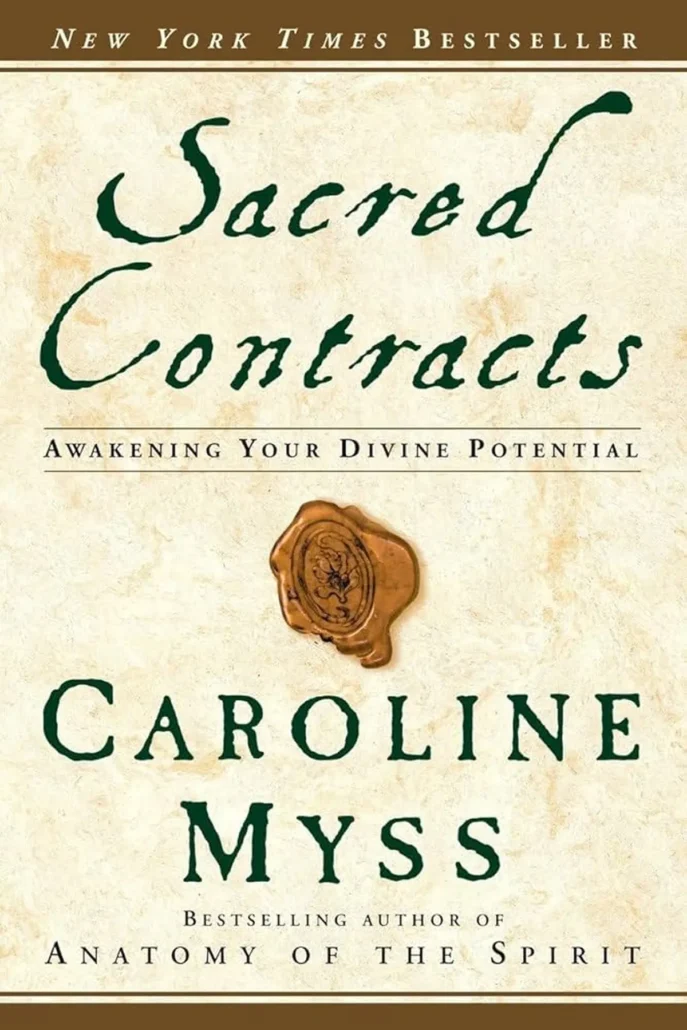
“Entering the Castle: An Inner Path to God and Your Soul” – Inspired by the mystical teachings of Saint Teresa of Ávila, this book offers a transformative journey through inner chambers of self-awareness and spiritual growth, inviting readers to explore the depths of their soul.

“Energy Anatomy” – Myss explores the energetic systems of the body, including the chakras and meridians, and their significance for health and well-being. This book provides insights into the relationship between energy and consciousness, offering practical guidance for healing and personal transformation.
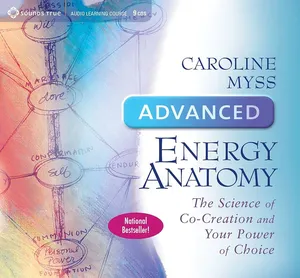
“Invisible Acts of Power: Channeling Grace in Your Everyday Life” – Myss explores the power of grace and synchronicity in everyday life, revealing how small acts of kindness and compassion can have profound effects on the world around us.

“Why People Don’t Heal and How They Can” – In this book, Myss explores the obstacles to healing, both physical and emotional, and offers insights into how individuals can overcome these barriers to achieve true wellness and wholeness.
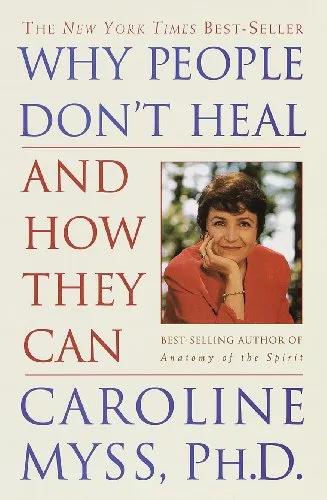
The Science Behind Intuition
Exploring the scientific basis for intuitive healing offers insight into the potential mechanisms of action that underlie this holistic approach, particularly within the context of osteopathy. While intuitive healing is often viewed through a spiritual or metaphysical lens, emerging research suggests that there may be scientific explanations for its efficacy. One possible mechanism is the role of the autonomic nervous system (ANS) in mediating the mind-body connection. The ANS regulates involuntary bodily functions, such as heart rate, digestion, and immune response, and is influenced by both conscious and unconscious processes. Intuitive healing practices, such as mindfulness meditation and guided visualization, have been shown to modulate ANS activity, promoting relaxation and reducing stress levels, which can enhance the body’s self-healing mechanisms.
Furthermore, intuitive healing approaches may influence the psychoneuroimmunological (PNI) axis, which encompasses the interactions between the nervous, endocrine, and immune systems. Chronic stress and emotional distress have been linked to dysregulation of the PNI axis, leading to increased inflammation and susceptibility to illness. Intuitive practices, such as energy healing and breathwork, have been shown to reduce markers of inflammation and enhance immune function, suggesting that they may play a role in restoring balance to the PNI axis and promoting overall health and well-being.
Additionally, recent advances in neuroscience have shed light on the role of the brain in processing intuitive information and guiding decision-making. Intuitive insights are thought to arise from the integration of subconscious perceptual cues, past experiences, and emotional responses in the brain’s prefrontal cortex and limbic system. Functional magnetic resonance imaging (fMRI) studies have shown that intuitive decision-making involves complex neural networks, including the default mode network (DMN) and the insular cortex, which are associated with self-awareness, emotional processing, and social cognition. Osteopaths who incorporate intuitive insights into their practice may be tapping into these neural networks to gain deeper understanding of patients’ needs and tailor treatments accordingly.
Moreover, the concept of bioplasma, or the subtle energy that permeates and animates the human body, provides a framework for understanding the energetic aspects of intuitive healing. While bioplasma is not directly observable or measurable using conventional scientific methods, its existence is supported by findings from quantum physics and bioenergetic research. Intuitive healing practices, such as Reiki and therapeutic touch, are believed to work by channeling and balancing bioplasma within the body, promoting healing on a physical, emotional, and energetic level.
Recent research in neuroscience and psychology has shed light on the neural substrates of intuition and its role in decision-making and problem-solving. Functional magnetic resonance imaging (fMRI) studies have shown that intuitive decision-making activates brain regions associated with emotion, memory, and the subconscious mind, such as the amygdala, hippocampus, and prefrontal cortex. These findings suggest that intuition involves a complex interplay between conscious and unconscious mental processes, drawing upon past experiences, emotions, and somatic cues.
In the context of osteopathy, intuitive healing may operate through various mechanisms, including:
- Somatic Sensitivity: Osteopathic practitioners develop heightened somatic sensitivity through years of training and clinical experience, allowing them to detect subtle changes in tissue texture, tension, and movement. This heightened awareness enables practitioners to intuitively assess musculoskeletal imbalances and dysfunctions, guiding them to areas of the body that require attention and treatment.
- Empathic Connection: Intuitive healing within osteopathy often involves establishing empathic connections with patients, tuning into their emotions, body language, and energetic field. Research in social neuroscience has shown that empathy involves neural circuits responsible for emotional resonance, perspective-taking, and interpersonal understanding. By empathizing with patients on a deep level, osteopathic practitioners can intuitively sense underlying emotional and psychosocial factors contributing to their health concerns, informing personalized treatment approaches.
- Nonverbal Communication: Intuitive healing relies heavily on nonverbal communication cues, such as facial expressions, gestures, and posture. Studies have demonstrated the importance of nonverbal communication in conveying empathy, trust, and rapport between healthcare providers and patients. Osteopathic practitioners skilled in intuitive healing can discern subtle nonverbal cues from patients, helping them to gain insights into their physical and emotional state, as well as their responses to treatment interventions.
- Embodied Cognition: Intuitive healing within osteopathy may also involve embodied cognition, wherein cognitive processes are grounded in bodily sensations and experiences. Embodied cognition theories propose that bodily sensations and movements shape cognitive processes, such as perception, memory, and decision-making. Osteopathic practitioners may rely on embodied knowledge acquired through hands-on palpation and manipulation techniques to inform their intuitive assessments and treatment strategies, tapping into the body’s innate wisdom and self-regulatory mechanisms.
Conclusion
In conclusion, the integration of intuitive healing principles, as espoused by Caroline Myss, with the practice of osteopathy offers a promising avenue for holistic patient care. By acknowledging the interconnectedness of mind, body, and spirit, osteopaths can enrich their diagnostic acumen and treatment efficacy. Through the cultivation of intuitive skills and the exploration of energy anatomy, practitioners can delve deeper into the root causes of patients’ ailments, addressing not only physical symptoms but also emotional and energetic imbalances. While ethical considerations and professional boundaries must be upheld, the incorporation of intuitive healing into osteopathic practice holds immense potential for facilitating profound healing experiences and promoting overall well-being. As osteopaths continue to explore and embrace these synergistic approaches, they contribute to the evolution of healthcare towards a more comprehensive and integrative model, ultimately empowering patients on their journey towards optimal health and vitality.
References
- Dijksterhuis, A., & Nordgren, L. F. (2006). A theory of unconscious thought. Perspectives on Psychological Science, 1(2), 95-109. doi:10.1111/j.1745-6916.2006.00007.x
- Bechara, A., Damasio, A. R., Damasio, H., & Anderson, S. W. (1994). Insensitivity to future consequences following damage to human prefrontal cortex. Cognition, 50(1-3), 7-15. doi:10.1016/0010-0277(94)90018-3
- Greene, J. D., Nystrom, L. E., Engell, A. D., Darley, J. M., & Cohen, J. D. (2004). The neural bases of cognitive conflict and control in moral judgment. Neuron, 44(2), 389-400. doi:10.1016/j.neuron.2004.09.027
- Damasio, A. R. (1994). Descartes’ error: Emotion, reason, and the human brain. New York: Putnam.
- Goleman, D. (1996). Emotional intelligence: Why it can matter more than IQ. New York: Bantam Books.
- Decety, J., & Jackson, P. L. (2004). The functional architecture of human empathy. Behavioral and Cognitive Neuroscience Reviews, 3(2), 71-100. doi:10.1177/1534582304267187
- Blakemore, S. J., & Decety, J. (2001). From the perception of action to the understanding of intention. Nature Reviews Neuroscience, 2(8), 561-567. doi:10.1038/35086023
- Moll, J., de Oliveira-Souza, R., & Eslinger, P. J. (2003). Morals and the human brain: A working model. NeuroReport, 14(3), 299-305. doi:10.1097/00001756-200303030-00001
- Klein, G. (2003). Intuition at Work: Why Developing Your Gut Instincts Will Make You Better at What You Do. New York: Currency.
- Kahneman, D. (2011). Thinking, Fast and Slow. New York: Farrar, Straus and Giroux.
- Epstein, R. (2008). Intuition: A Guide to the Power of Knowing. New York: Anchor.
- Gigerenzer, G. (2007). Gut Feelings: The Intelligence of the Unconscious. New York: Viking.
- Damasio, A. R. (2010). Self Comes to Mind: Constructing the Conscious Brain. New York: Pantheon.





